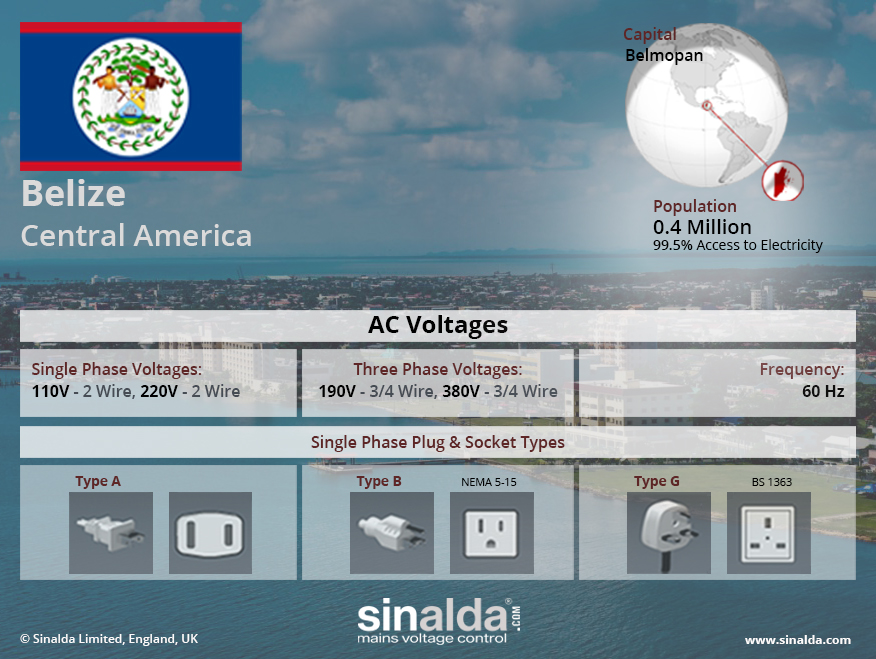Last Updated: 01 November 2021

Copyright 2021 Sinalda. Permission to use this image is granted subject to appropriate credit being given to www.sinalda.com as the source.
Power Quality in Belize
Belize, a small Central American country known for its diverse ecosystems and vibrant culture, has, in recent years, made significant progress in developing a more reliable electricity supply network. However, it is still heavily reliant on imported power, and the sporadic nature of its domestic power generation, which is heavily dependent on hydropower and biomass, means power outages and voltage fluctuations still occur now and then.
Power Sector in Belize
The Belize Electricity Limited (BEL) is the primary utility company responsible for generating, transmitting, and distributing electricity across the country.
Over the years, Belize has faced several challenges in providing a reliable electricity supply to its population. The country has a relatively small and dispersed population, with a mix of urban and rural areas, making extending electricity infrastructure to all regions logistically challenging.
However, Belize has made remarkable strides in expanding its electricity coverage. As of 2021, over 99% of Belize’s population has access to electricity, indicating a high level of electrification throughout the country. This achievement is notable considering the geographical constraints and the efforts required to connect remote communities.
In terms of power generation, Belize has a diverse energy mix. The country primarily relies on imported petroleum products for electricity generation, including diesel and heavy fuel oil. However, Belize has been actively exploring renewable energy sources to reduce its dependence on imported fossil fuels and mitigate the environmental impact. The country has significantly invested in hydroelectric power, with the Chalillo and Vaca hydroelectric facilities contributing to the energy mix.
The reliability of the electricity supply network in Belize has significantly improved in recent years. The BEL has invested in infrastructure upgrades, including installing advanced metering systems, which enable real-time monitoring and management of the electricity grid. These upgrades have helped to reduce downtime and improve response times during outages.
Despite the progress, Belize still faces occasional power outages, particularly during severe weather events, such as hurricanes or heavy storms. These events can disrupt the power supply and require prompt repairs to restore electricity.
Belize’s commitment to renewable energy development is a positive step toward a more sustainable and reliable electricity supply network. The country has set ambitious goals for increasing the share of renewable energy in its mix, including expanding solar and wind power use. These efforts aim to enhance the reliability and resiliency of the electricity supply network while reducing greenhouse gas emissions and promoting environmental sustainability.
Conclusion
In conclusion, Belize has made significant progress in developing a reliable electricity supply network with high levels of electrification throughout the country. Infrastructure investments, diversification of the energy mix, and the promotion of renewable energy sources have contributed to improving the reliability and sustainability of the electricity supply network. While challenges remain, Belize’s commitment to enhancing the network’s resilience and reducing its environmental impact positions the country on a positive trajectory toward a more reliable and sustainable energy future.
Share your Views and Experiences
Every reasonable effort is made to ensure that the information provided above is accurate. No guarantees for the accuracy of the information is made.
So we are able to keep the content updated, and actual on the ground experiences can be shared with others, please feel free to contact us.







